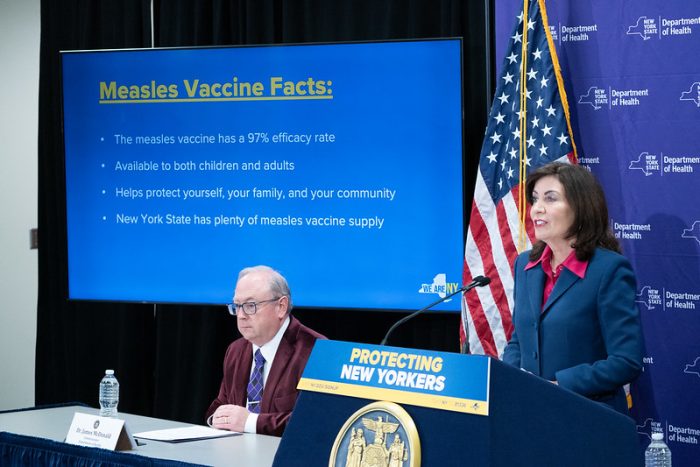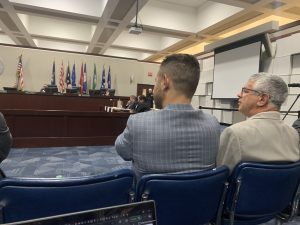Reconfiguration is the right decision for 3V schools
This letter is meant to address all the Monday morning quarterbacks that are suddenly coming out of the woodwork to voice their complaints regarding the district reconfiguration. The timing of this mini defection is ironic since the reconfiguration is going to happen and the time for speaking up was before the official BOE vote. Hindsight critics can now take a seat. This change has been in the making for decades and remaining “unique” is not an option.
How about joining the 21st century and accepting that our kids DESERVE this change? The kids being affected by it are excited and more than capable of adapting. The parents, being swayed by the ineffectual attempts of a former district employee, are the ones whining about the revision that is in fact going to happen. This is not sudden, it has been researched and planned for, and the district has done its due diligence regarding transparency with the community. I am certainly not always in agreement with Superintendent Kevin Scanlon or this Board of Education, in fact I have plenty of bones to pick with them, but on this I know they got it right.
The sudden desire to combine a start time change with the reconfiguration is a whole other matter, but this has now joined the ranks of the top three things Three Village parents can gripe about. I stand by my argument that this half-hour change is utterly useless and a complete waste of more than a million dollars. If parents have enough time to write letters to the board about a reconfiguration that is already set to happen then they have more than enough time to monitor their children’s sleep habits. And it matters not how old they are, take the phones and other devices away and they will fall asleep from sheer boredom.
Let’s focus on the amazing opportunities that will come from this move and stop following the “lead” of a disgruntled former employee whose quarrel holds no water. The cost (from transportation alone) and lack of difference that will result from the start time change should be the debate every taxpayer has with themselves come budget time. As an alumnus, parent and lifelong community member I can’t wait to see how the mighty 3V thrives in a middle school model. Dissenters, let it go already.
Stefanie Werner
East Setauket
BESS still under discussion
George Altemose’s March 13 letter in TBR News Media [“BESS systems still in dispute”] about the proposed battery energy storage systems facility asks a valid question about how much power is needed to “power a home.” Unfortunately, in his analysis of what would be needed he ends with an unjustified conclusion. The average power used over the course of a day by most homes is about 1,000 watts, a value used by BESS proponents (my use is less). For an unstated reason Altemose says the average power use must be more like 5,000 watts, a factor of 5 larger. This changes the picture dramatically. It is true that use during the day and at night can differ significantly, but the 5,000 watts for an average use is high for all but the largest or power inefficient houses.
Peter Bond
Stony Brook
LaLota and Suozzi hold town halls
I attended Nick LaLota’s (R-NY1) tele-town hall on March 5 [LaLota and Suozzi hold town halls, TBR News Media, March 13].
The one-hour event started a bit late. LaLota spoke for the first 10 minutes, answering accusations that questions were only accepted from supporters, and that they were not representative of his constituent’s concerns. He said that was not true.
He then took about six questions from people who asked legitimate constituent concerns. But he did not actually answer them. His replies consisted of rambling talking points — not substance. And because callers were cut off after asking their question, there was no “give and take.”
I waited in the queue to ask: “Rep. LaLota, do you approve of the President’s alliance with Vladimir Putin? Yes or no?” But I did not get the chance to ask. I’m sure there were a great many people who did not get to pose questions.
The final 10 minutes were devoted to the congressman thanking us for participating in the town hall and his gratitude for being given the opportunity to represent us in the House of Representatives.
He did use polling opportunities to assess our views on a few topics. Press 1 to agree or 2 to disagree. I believe those polls were worthless. The only viewpoint LaLota will support is that of President Trump.
Donna Newman
Stony Brook
LaLota town hall disappoints
I appreciate that your March 13 edition reported on Congressman Nick LaLota’s (R-NY1) recent “Town Hall.” I was on the call for that telephone event. Unfortunately, it could hardly be characterized as “a town hall.” The call lasted for sixty minutes. There was time for only a very few questions to be asked of the congressman. He spent about one quarter of the time, at the start and conclusion of the call, simply telling us what a good job he felt he was doing. His answers were extremely lengthy and repetitive. They rarely addressed the key elements of the questions. They never allowed for a follow-up question.
The “polling” that LaLota conducted was your standard, misleading “push poll.” Slightly paraphrasing: “Press 1, if you think we should try to reduce government waste. Press 2, if you think it is okay for the government to waste taxpayer dollars.”
The question I had hoped to have asked was, “Will you please speak out against the indiscriminate, excessive cuts in government services that are hurting millions of Americans including thousands of your constituents; and will you speak out against the fact that so many of these cuts were done in a manner that was illegal and, in some cases, clearly unconstitutional?”
Robert Marcus
Setauket, New York
Community alert!
Greetings Port Jefferson Station/Terryville residents, as well as our friends and neighbors from nearby areas.
As many know, in September of 2024, the Town of Brookhaven approved the zoning change sought by Staller Associates for a 260- to 280-unit multifamily apartment complex redevelopment plan for Jefferson Plaza. This is where the existing local Post Office is located presently. This was a controversial proposal that will increase density to levels never seen locally before. As approved, this project will transform the face of our community. Our local civic association worked long and hard to try to voice our concerns regarding this intensive use to address the many impacts, both positive and potentially negative.
One concern was as this development moves forward it enhances a sense of place for our hamlet and creates a positive environment reflecting the character of community. One method for accomplishing this goal is thoughtful design and the use of good architecture. Will it be warm and welcoming or cold and imposing? In this instance, the choice can be ours.
In coordination with our Councilman, Jonathan Kornreich (D-Stony Brook) and Brookhaven town, our civic association is sponsoring a community forum regarding this redevelopment plan at our monthly meeting. I urge all my neighbors and concerned citizens to join us on Tuesday March 25, at 7 p.m. at the Comsewogue Library. Representatives of Staller Associates will present various architectural designs to solicit input and comments from residents. This Visual Preference Survey process will enable us to shape and guide the face and feel of our neighborhood as this mega-project proceeds and impacts our area. Please join us and participate in our shared future.
Ira Costell, President
Port Jefferson Station/Terryville Civic Associatio
WRITE TO US … AND KEEP IT LOCAL We welcome your letters, especially those responding to our local coverage, replying to other letter writers’ comments and speaking mainly to local themes. Letters should be no longer than 400 words and may be edited for length, libel, style, good taste and uncivil language. They will also be published on our website. We do not publish anonymous letters. Please include an address and phone number for confirmation. Email letters to: [email protected] or mail them to TBR News Media, P.O. Box 707, Setauket, NY 11733







 The contest challenges participants to imagine a unique journey for the selected sea glass fragment chosen by The Whaling Museum and to weave a captivating tale around it. The winning stories will have the chance to be read at the Sea Glass Festival, a prestigious event celebrating sea glass and its significance in maritime history. This year’s Sea Glass Festival will be held on Sunday, July 20 from 10 a.m. to 5 p.m.
The contest challenges participants to imagine a unique journey for the selected sea glass fragment chosen by The Whaling Museum and to weave a captivating tale around it. The winning stories will have the chance to be read at the Sea Glass Festival, a prestigious event celebrating sea glass and its significance in maritime history. This year’s Sea Glass Festival will be held on Sunday, July 20 from 10 a.m. to 5 p.m.













